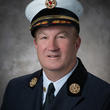Fire Operations
We respond to emergencies including fires, vehicle accidents, hazardous materials incidents, technical rescues, medical assistance and large scale events held in the city.
We are an organization of dedicated professionals who are committed to serving the community by protecting life, property, and the environment through prevention, education, emergency medical, civil defense and fire service.
We protect all Boston residents and the hundreds of thousands of people who work, shop and visit the City. Learn more about the Boston Fire Department, and how our divisions work together.
Work With Us
Become A Firefighter
Want to join the Boston Fire Department? Learn how to become a Boston firefighter
Become a Fire Cadet
Learn more about how to apply for the new Boston Fire Cadet Program.
Civilian Positions
The Boston Fire Department employs over 150 civilian employees in support of our Firefighters and Operations. See our open positions.
Tips and resources
We have some useful guides to help you and your family stay safe from fires.
Reports and publications
ReportsBrief history of the Fire Department
Brief history- 1631: The City passed the first fire prevention ordinance. It banned thatched roofs and wooden chimneys.
- 1653: We set up a contract with Joseph Jynks to create a fire engine.
- 1678: We passed building laws that required “tyle” roofs and brick walls. The City create the first public fire department, with Thomas Atkins as its chief.
- 1715: The Fire Department developed into six companies.
- 1718: The first mutual fire society was created to salvage members' goods after fires.
- 1799: We imported the first leather fire hose from England.
- 1837: The City created the Fire Department as you know it now.
- 1851: We installed the first public fire alarm system through telegraph and an office at Boston City Hall.
- 1859: Steam engines replaced hand engines, and we began hiring permanent crew.
- 1863: We started using adjustable fog nozzles.
- 1871: We started using a new 11-inch fire hose. Chief John Damrell called it a success. 1872: The Great Boston Fire of 1872 destroyed 776 buildings, costing $75 million and killing 13 people. This led to the creation of a permanent board of fire commissioners.
- 1873: The department got its first steam engine fireboat.
- 1874: We elected a permanent district chief. Many of the department’s companies also got fully staffed with permanent firefighters.
- 1875: We changed the locks on fire alarm boxes to stop false alarms, and created the first fire department repair shop. We installed dial lines so different parts of the department could communicate. The telephone was invented the following year.
- 1876: The department started using the aerial ladder. All fire engines were equipped with relief valves and shutoff nozzles.
- 1877: We replaced regular ladders with new Bangor extension ladders.
- 1881: The department installed sliding poles in the firehouses, and added bunks to several stations for faster response times.
- 1882: Firehouses began using electric gongs for alarms. We also installed private fire alarm boxes in schools, stores, and other public buildings.
- 1883: First aid kits were given to all fire companies.
- 1889: The Thanksgiving Day fire set off eight alarms. Outside help rushed to the scene and two firemen were killed in the fire. Their widows received $300 pensions.
- 1895: The board of commissioners was replaced with one Fire Commissioner after a Roxbury fire destroyed 216 buildings.
- 1901: We equipped fire engines and ladder trucks with rubber tires.
- 1904: Eight fire departments joined together to create mutual aid plans.
- 1905: The Boston fire chief got an electric car. There were 32 car fires that year.
- 1908: We started pressure-testing hoses on an annual basis.
- 1914: We created exams for all ranks below chief at the department.
- 1921: Pumping stations replaced old salt fire main systems.
- 1925: We retired old fire hoses and installed radios in fireboats, cars, and rescue companies.



